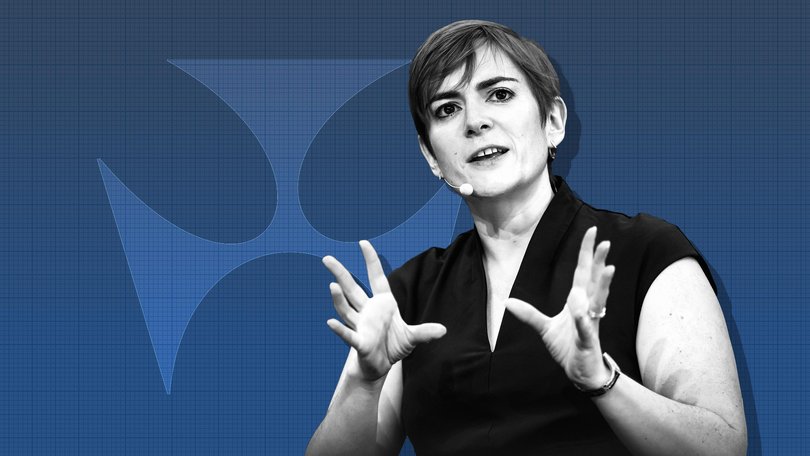Reserve Bank assistant governor Sarah Hunter forecasts house price surge as IMF eyes high inflation in 2026

The Reserve Bank of Australia’s top economist is expecting house prices to soar as a result of three interest rate cuts this year.
Sarah Hunter, the RBA’s assistant governor in charge of economic forecasting, said relief from the February, May and August rate cuts would continue to feed demand for property, with values in Brisbane, Perth and Adelaide growing at a faster pace than wages.
“Obviously, lower interest rates increase people’s borrowing capacity and that flows through to [house prices],” she told the Citi Australia and New Zealand Investment Conference in Sydney on Wednesday.
Sign up to The Nightly's newsletters.
Get the first look at the digital newspaper, curated daily stories and breaking headlines delivered to your inbox.
By continuing you agree to our Terms and Privacy Policy.“We’re not surprised that we’ve seen a pick-up and it’s certainly something we’ll be paying attention to and how much it continues from here.”
She also issued a warning about Australia’s biggest economic problem: an inefficient workforce, arguing companies were too hesitant to invest in new technology because of the US-led trade war, making it harder to improve living standards.
“Business and labour market dynamism has declined, which means it now takes longer for capital and labour to move to higher productivity firms,” she said.
“Technological diffusion has slowed, with Australian firms taking longer to catch up to the global technological frontier – something mirrored in some other advanced economies.”
Trade wars
The bank’s chief economist is also watching for signs of a slowdown as a result of US President Trump’s trade war against Australia’s largest trading partner, China.
“My China team and my international team are getting a real workout at the moment. They’re working very hard on this and it’s really challenging,” Ms Hunter said.
She said the uncertainty around the trade war and Trump’s erratic policies made it harder for businesses to commit to capital expenditures or investments if they’re unsure about future tariff or tax rates.
However, she also noted signs the US jobs market is weakening, on the back of the trade war, is not yet flowing through to the Australian labour market.
“What we’ve seen in the data is coming through in the US labour marketplace in particular, but we’re seeing less evidence of that here,” she said.
She made the call on weak workplace output hours after the International Monetary Fund warned Australia would have an inflation problem in 2026 that could potentially stop further rate cuts.
“Ultimately, productivity growth is the determinant of sustainable real wages growth, as it allows nominal wages to increase without leading to a build-up in inflationary pressure,” Ms Hunter said.
“So, while real wages can grow more quickly than productivity for a period without necessarily driving up inflation, over time productivity growth underpins the rate of real wages growth.”
If companies produce less per hour, costs are often passed on to consumers to pay for higher wages, which can in turn add to inflation.
“Productivity growth allows us to produce more than we could before, which means it expands the supply capacity of the economy,” Ms Hunter said.
“This is an important consideration for monetary policy, because it means the economy can sustain a faster pace of growth in demand before it hits capacity constraints and inflation starts to rise.”
Weak productivity growth, or the hourly output from staff, means wages over the longer term may barely keep up with inflation, meaning less spending power for consumers.
Inflation worries
The IMF forecast Australia’s consumer price index would grow by 3 per cent in 2026, which would be well above the inflation levels forecast for other advanced economies in the Asia-Pacific region.
This would also put inflation at the top of the RBA’s 2 to 3 per cent target and make future rate cuts less likely, given the Reserve Bank aims to keep inflation sustainably in the middle of that band.
Productivity has been flatlining in recent years, with a very weak growth pace of just 0.2 per cent during the last financial year.
This is a far cry from the average annual pace of 2.1 per cent during the 1990s to mid-2000s as the introduction of the internet made businesses far more productive, with AI yet to deliver tangible results in Australia.
The wage price index of 3.4 per cent in 2024-25 was better than the 2.1 per cent annual inflation rate during the June quarter.
But monthly inflation in August hit 3 per cent. If that kind of number was replicated in the September quarter inflation figures, due out on October 29, real wages growth would be squeezed.
Shadow treasurer Ted O’Brien blamed the 5.5 per cent increase in Federal Government spending in 2024-25, as the economy grew by 1.8 per cent, for the inflation problem.
“The IMF warns the world faces ‘dim prospects’ and Australia is vulnerable due to Labor’s economic mismanagement,” he told The Nightly.
The RBA’s next decision is occurrring on Melbourne Cup day, with most economists expecting rates to remain on hold at 3.6 per cent.
